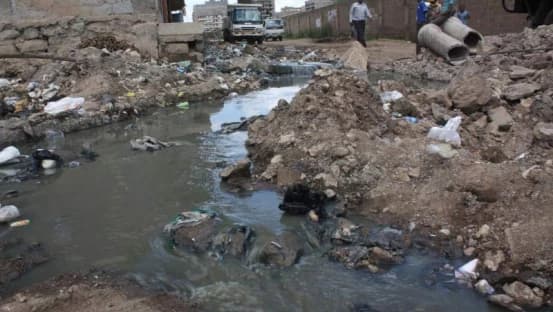Loading News Article...
We're loading the full news article for you. This includes the article content, images, author information, and related articles.
We're loading the full news article for you. This includes the article content, images, author information, and related articles.
A major pipeline breakdown has resulted in the distribution of discoloured water to several affluent Nairobi neighbourhoods, highlighting systemic infrastructure vulnerabilities and raising public health alarms amid recent warnings over waterborne diseases.

NAIROBI, KENYA – Residents in some of Nairobi’s most exclusive residential areas, including Lavington, Gigiri, Parklands, Kitisuru, Loresho, and Kilimani, reported receiving discoloured and dirty water from their taps starting Thursday, 20th November 2025, prompting immediate concern among the public. [5] The Nairobi City Water and Sewerage Company (NCWSC) has since attributed the contamination to emergency maintenance following a breakdown on a critical pipeline. [5]
In a statement issued on Friday, 21st November 2025, NCWSC Acting Managing Director, Martin Nang'ole, confirmed that the incident was caused by a breakdown on the Sasumua–Kabete pipeline the previous day. [5] He described the event as an "isolated matter that arose during routine pipe maintenance." [5] According to Mr. Nang'ole, the company's staff responded promptly to repair the damaged pipe and have been actively flushing the pipeline to restore normal water quality. [5] “The technical team is in the affected area and is continually flushing the line to ensure water quality is restored,” Mr. Nang’ole stated, advising affected customers to contact the utility's water quality team in Kabete. [5]
The official explanation, however, did little to quell the immediate panic among residents. Various residents' associations and estate management teams issued alerts, with one management team informing its members of an "unexpected inflow of heavily discoloured water from the City Council supply, which has unfortunately contaminated our storage tanks." [5] This confirms that the contamination extended beyond the city's mains and into private water storage systems, posing a prolonged risk.
This incident occurs against a backdrop of heightened public health vigilance in the capital. Earlier in November 2025, the Nairobi City County government issued a public health alert following heavy rains, urging residents to report any instances of "dirty or foul-smelling tap water indicating pollution" due to risks of sewer overflows contaminating water sources. [6, 11] The contamination event underscores the fragility of Nairobi's aging water infrastructure. Much of the city's sewerage system, originally built in 1965 for a population of 350,000, is now serving over 5.3 million people, leading to what experts call "grossly inadequate" drainage and waste management. [33, 34] This systemic pressure increases the likelihood of pipe bursts and cross-contamination between sewer and water lines.
The timing of the contamination is particularly alarming for regional health officials. On Thursday, 20th November 2025, the Africa Centres for Disease Control and Prevention (Africa CDC) announced that cholera cases on the continent are three times higher than in 2022, describing it as the worst outbreak in years. [10, 13, 17] Cholera is a waterborne disease spread through contaminated food and water. [10] While there is no direct link established between the Nairobi pipeline failure and any specific disease outbreak at this time, the incident serves as a stark reminder of the potential for such events to become public health crises. Kenya has recent experience with the rapid spread of such diseases; in April 2025, a cholera outbreak was confirmed in Nairobi, Migori, and Kisumu counties, resulting in 97 cases and six fatalities. [14, 27]
The Kenya Bureau of Standards (KEBS) sets stringent national standards for potable water, specifying limits for physical characteristics like turbidity and colour, as well as microbiological contaminants such as E. coli. [3, 4] The discoloured water reported by residents would not meet these mandatory safety parameters, which are enforced by the Water and Sanitation Regulatory Board (WASREB) to prevent waterborne illnesses. [8] The persistent pollution of the Nairobi River Basin—the primary source for the city's water—from industrial effluent and untreated sewage further complicates the ability of the NCWSC to deliver safe water consistently. [12, 16, 31] While the government has launched the Nairobi Rivers Regeneration Program to address this long-standing pollution, the benefits of such initiatives are threatened by failures within the distribution network itself. [33] This latest incident demonstrates that even when water is treated to required standards, its safety can be compromised before it reaches the consumer's tap, placing the burden of vigilance on both the utility provider and the public.